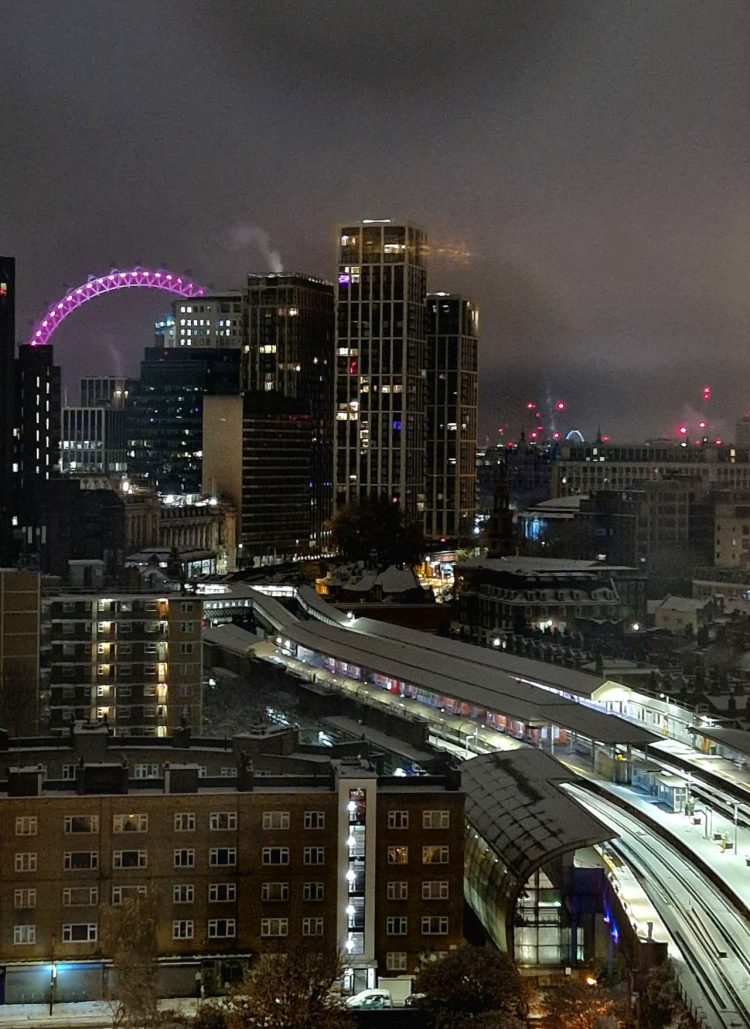Because of heavy snow in London, the South East, and East Anglia, train services are expected to be disrupted for the rest of today, Monday, 12th December, while Network Rail teams clear the railway of the snow and ice.
Specialist equipment will defrost frozen points and signals, whilst trains fitted with snow ploughs will be used to clear snow and ice from tracks where needed. Rail passengers are being advised to check their travel arrangements before they depart at www.nationalrail.co.uk to see if their train is running.

Just like other modes of transport, the railways are adversely affected by winter weather, including snow and ice. However, cold weather can impact rail services in other ways, including:
freezing points and mechanical signals;
- snow and ice blocking points, which prevents trains from using certain routes;
- ice forming on overhead power lines and affecting the ability of electric trains to draw power;
- reducing drivers’ visibility of lineside signs and signal through falling snow and sleet, which means trains need to travel slower.

During winter conditions Network Rail uses various methods of dealing with the snow and ice, including:
- Obtaining specialist weather forecasts from the Met Office on the specific conditions that could affect the tracks and the probability of ice forming on third rails.
- Using automatically activated gas and electric heaters to prevent points freezing when rail temperatures fall below a certain level, with thousands of staff working night and day to check hundreds of points at key junctions to prevent them freezing.
- Installing snow fences in locations that are prone to snow drifts to prevent snow drifting onto the tracks.
- Using a variety of equipment to clear snow when it reaches a depth of six inches or more, including miniature snow ploughs that fit on the front of trains for smaller volumes of snow. To clear drifts of greater depths, specialist drift ploughs are used.
- Spraying heated anti-freeze is onto the third rail using a fleet of specialist anti-icing trains. Empty passenger trains, so-called ‘ghost trains,’ are run throughout the night to help prevent ice building up, whilst some train operators also have de-icing equipment attached to their trains.
- When snow and ice are likely to cause severe disruption, contingency plans using emergency timetables will be agreed upon in advance with train operators and communicated to passengers when disruption is likely.
- When temperatures drop below freezing, Network Rail staff patrol tunnels and under-bridges to ensure icicles do not cause obstruction to trains or to overhead power lines.

Further details on Network Rail’s methods of dealing with snow and ice can be found at
https://www.networkrail.co.uk/running-the-railway/looking-after-the-railway/delays-explained/snow-and-ice/






Responses